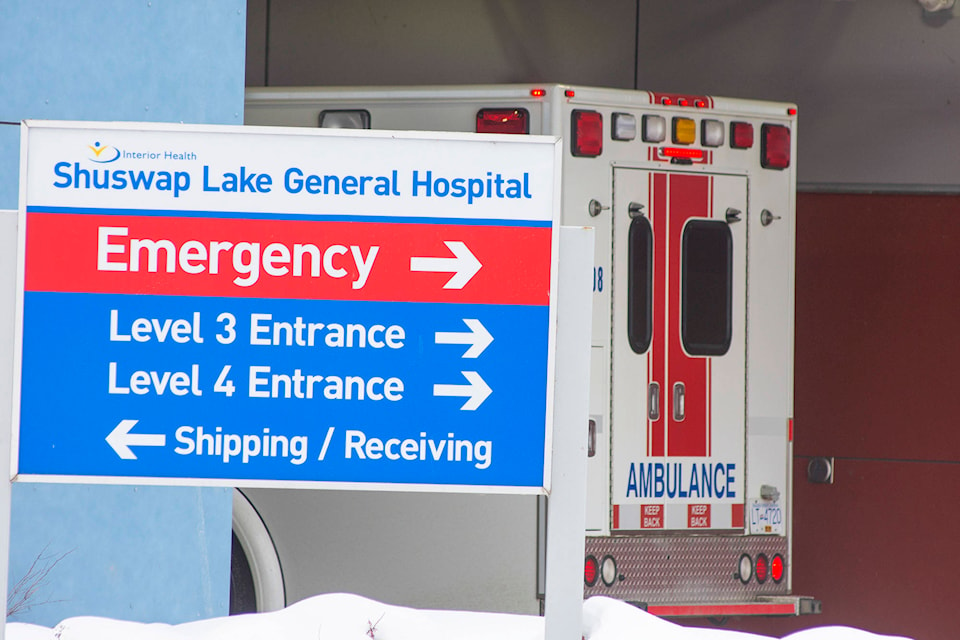Salmon Arm doctors are concerned a provincial initiative designed to improve access to health care services could be detrimental to local medical practices.
In November 2019, an urgent and primary care centre (UPCC) opened in Vernon.
The 13th such centre announced in B.C., Health Minister Adrian Dix said the facility would provide a “completely different model” from a walk-in clinic, connecting patients to full-time primary care providers and using a team-based approach for certain types of cases, such as patients suffering from mental health issues and addictions.
Read more: New one-stop shop for seniors health opens in Kelowna
Read more: Mental health first aid course offered by CMHA at Salmon Arm Okanagan College campus
According to the B.C. government, the centres are intended to meet health-care needs, “primarily in large urban centres where a higher percentage of the population is unable to find, or access, a regular family doctor or nurse practitioner.”
The centres are also intended to help reduce pressure on local hospital emergency rooms by providing care for issues that do not need to be seen in a hospital.
An email provided to local doctors indicates Salmon Arm was considered as a potential site for a UPCC.
In response, Division of Family Practice held a meeting with Interior Health and medical professionals from the area to discuss the possibility.
Tracey Kirkman, executive director for the Shuswap North Okanagan Division of Family Practice, said while a centre may look attractive to patients in concept, there are some downsides.
Read more: Rural doctors, primary care get big share of B.C. doctor settlement
Read more: B.C. health minister announces urgent care centre for Central Okanagan residents
They are an attractive place to work for some, said Kirkman. The position comes with a salary, set hours and no overhead costs.
That can be a draw for physicians and can take away from physician recruitment efforts for private practices.
“We desperately try to cover full-service recruitment in Salmon Arm. This will be a challenge for us if you have a competing UPCC in the community,” Kirkman said.
She went on to explain patients who go to a UPCC will have access to a physician and a Primary Care Network (PCN) team, something physicians not working in a centre could not be refer their own patients to, despite calling for a similar care network of their own for more than a decade.
Another concern is that UPCCs are not conducive to providing “cradle to grave” care, something Kirkman said the Division of Family Practice strive for.
“Salmon Arm is a community where we truly value full-scope family service practice,” Kirkman said. “Patients also value this and want this longitudinal care and the relationship with their providers.”
The UPCC location in Vernon is backed fully by Kirkman as the centre supports the city’s homeless population and was an addition to an existing, non-provincially mandated program.
But she maintained Salmon Arm is not the right location for a centre, though it could be beneficial in Sorrento and Sicamous if those neighbouring communities had the necessary population needed to make such ventures viable.
Those areas could, however, be helped by a PCN that would connect local physicians with a support team of various health professionals.
Read more: Multi-faceted care facility aims to be a one-stop wellness shop
Read more: Pharmacists to be added to B.C. primary care teams
“At the end of the day, as a division, we want to support what’s best for patients and doctors and we believe the answer is Primary Care Networks in our communities,” she said.
With a PCN, physicians and other primary care providers work together with other health-care providers, the health authority and community organizations to provide primary-care services.
During a visit to Shuswap Lake General Hospital in December 2019, Interior Health CEO Susan Brown spoke about concerns regarding a UPCC versus a PCN.
Read more: Province to bolster number of doctors and medical services in the South Okanagan
Read more: Shuswap doctors face increased demand “to be everything for everybody”
“Interior Health and First Nations groups and the Division of Family Practice would decide whether the UPCC was a good fit,” Brown said.
“So if they say the community needs (something) more than it needs a UPCC, and they can resolve the issues of access to primary care for this area through other means, they may choose to go that route.”
Kirkman commended the communication efforts fostered by the health authority and praised the government for its motivation to address access to care across the province.
The first step towards establishing a PCN would be a submission of interest from the Division of Family Practice.
Kirkman believes the ministry will ask for the submission in the spring.
